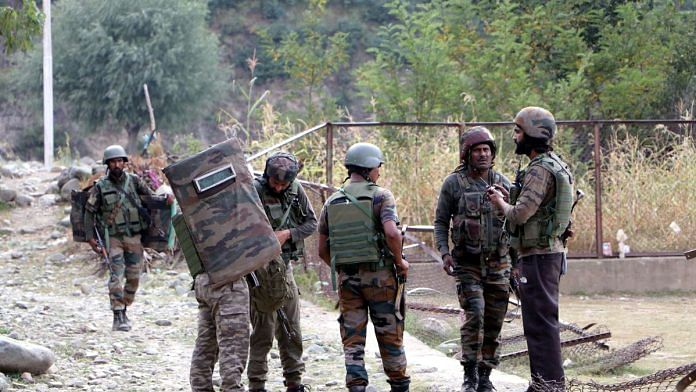The Anantnag encounter, which has seen the death of three senior officers of the security forces, including the Commanding Officer of Army’s counter-terrorism unit – Rashtriya Rifles – besides a jawan, and left several injured will go down in history as one of the bloodiest in Jammu and Kashmir.
This year, there have been seven incidents where military personnel were killed in operations and ambushes with terrorists. This, at a time when the overall security situation in Kashmir has eased compared to what it was before 2019. And that is why the Anantnag encounter, which was an intelligence-based operation that went haywire, is ThePrint’s Newsmaker of the Week.
Losing the leader
Losing a commanding officer is a big thing in the Army. The last time they lost a CO was in May 2020 when Colonel Ashutosh Sharma of 21 RR was killed along with four others that included his Company Commander, in Kashmir’s Handwara district. The Anantnag encounter is almost a repeat of what happened in 2020.
On the intervening night of 12-13 September, a joint operation by the Army and the Jammu and Kashmir Police was launched following a human intelligence input that confirmed there was a group of 3-4 terrorists hiding in thick jungles of Kokernag.
When the forces reached the concerned area, there were no terrorists and it was understood they had got wind of the incoming troops and had moved up the hill.
It was a steep hill and the operation was being led by the Company Commander Major Aashish Dhonchak.
By the time the team moved, Colonel Manpreet Singh had also arrived and moved up towards the Company Commander because the encounter had still not started.
Army sources said that in such operations, the Commanding Officer would like to stage himself as forward as possible. This is the usual practice. Had the encounter already begun, he would not have, they said defending his presence in the first line of firefight.
As the team climbed up, the terrorists opened up a volley of gunfire and Colonel Singh and Major Dhonchak were hit besides the young deputy superintendent (DySP) of Jammu and Kashmir Police.
The sudden burst of gunfire startled the security personnel and they ran for cover, which led to further injuries as some fell down the hill while climbing.
What actually led to the deaths, according to sources, was that the evacuation could not take place in time because there was utter chaos, and the helicopters could not land because of the ongoing gunfight.
The terrorists, who the security personnel believes includes Uzair Khan, a self-styled LeT commander, had opened fire on the helicopter as well and appeared well trained to carry out controlled fire, the sources said.
Also read: Why Pir Panjal region is becoming a militant hotspot— porous LoC, routes to Kashmir, ‘local support’
A tactical question
The deaths have raised questions on the need for a Commanding Officer to be leading an encounter.
The Srinagar-based Chinar Corps issued a statement on social media platform X (previously Twitter) Thursday, saying it “salutes the valour & sacrifice of Col Manpreet Singh, SM and Maj Aashish Dhonchak, SM of 19 RR Bn who laid down their lives in the line of duty and leading from the front in the highest traditions of the Indian Army…”
Incidentally, one of the big lessons the Indian Army learnt from its setback in Indian Peace Keeping Force (IPKF) in Sri Lanka was that officers should not be identifiable easily to the insurgents.
The lesson was to mix officers with troops by avoiding pips of rank, wearing slouch hats and carrying oversized backpacks.
Such was the situation in Sri Lanka that fighting units fell short of officers as LTTE snipers picked them out one by one. They knew that once the officer was killed or wounded, the junior commissioned officers and other ranks often lost initiative.
India Today had then reported that the ratio of officers to the men of other ranks killed in Sri Lanka is an all-time high. In the 1965 and 1971 wars with Pakistan, the ratio was 1:9.3 and 1:9.8, respectively.
“Here (Sri Lanka) it is 1:7.5. This was partly because the officers led from the front and partly because the LTTE snipers, hidden behind windows or on the Chinese – made sniper chairs strung on palm trees, always looked for the officers, often through telescopic gunsights. A vital lesson the army has learnt now is to mix its officers with troops by avoiding pips of rank, wearing slouch hats and carrying oversized back – packs”.
(Edited by Anurag Chaubey)



